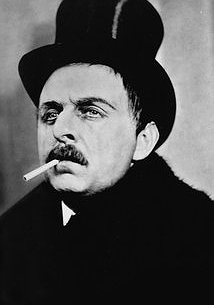سوابق کاری Rudolf Klein-Rogge
اضافه کردن اثر به سوابق Rudolf Klein-Rogge
مشخصات Rudolf Klein-Rogge
بیوگرافی / زندگینامه Rudolf Klein-Rogge
During the heyday of German silent cinema, Rudolf Klein-Rogge was the prototype for the master criminal, the irredeemable arch villain or mad scientist. Born in Cologne, he served as a cadet in a Prussian military academy before finishing his matriculation. He then began to attend acting classes and studying art history in Berlin and Bonn, making his debut on the stage in 1909. After playing in theatres in towns and cities along the Rhine and northern Germany for nearly ten years, he started making films in 1919.His villainous roots first came to the fore in Das Cabinet des Dr. Caligari (1920), but he really established his reputation in a series of classic expressionist films written by his then-wife Thea von Harbou and directed by Fritz Lang. Of these, the most memorable were his forceful Moriarty-inspired portrayals of the titular character in Dr. Mabuse, der Spieler - Ein Bild der Zeit (1922), and its later sequel, Das Testament des Dr. Mabuse (1933). The latter, which has an evil mastermind directing his empire from a madhouse, was so obviously aimed at the Hitler regime, that it was banned by Joseph Goebbels. Klein-Rogge's other noteworthy appearances include King Etzel in Die Nibelungen: Siegfried (1924) and Die Nibelungen: Kriemhilds Rache (1924); and his insane scientist C.A. Rothwang, creator of the robot creature in Fritz Lang's masterpiece Metropolis (1927). A powerful personality possessed of an almost hypnotic stare and a strong, resonant voice, Klein-Rogge continued on through the 1930's in supporting roles. However, the period of expressionist cinema in Germany had all but run its course and he died in relative obscurity in Graz, Austria, in April 1955.
حواشی Rudolf Klein-Rogge (0 حاشیه)
اضافه کردن حاشیه

هنوز کسی برای «Rudolf Klein-Rogge» نظری نگذاشته است. اولین نفری باشید که نظر میدهید

